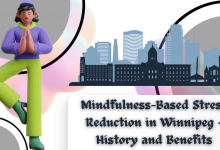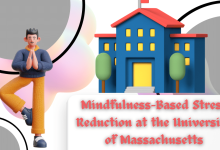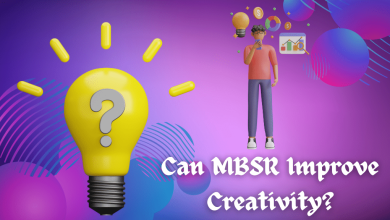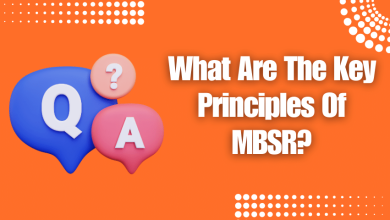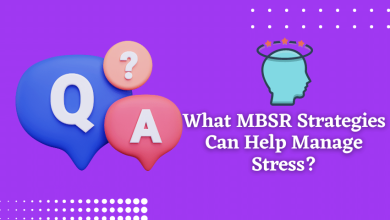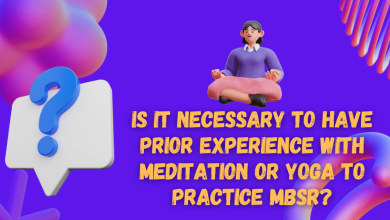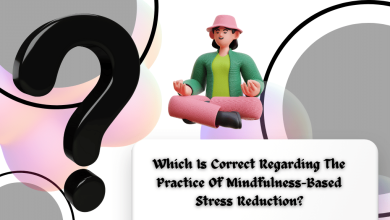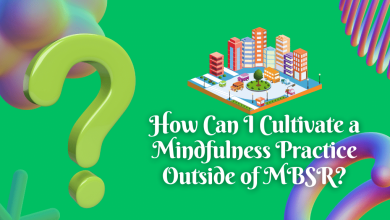How does MBSR Differ From Other Mindfulness-Based Practices?
Welcome! We’ll talk about mindfulness today and how Mindfulness-Based Stress Reduction (MBSR) is different from other mindfulness-based techniques.
I’ll share my knowledge and offer examples as a specialist in this industry with a lot of experience to assist you to comprehend the main distinctions.
A state of mind known as mindfulness entails paying attention to the present without passing judgment.
A range of methods known as mindfulness-based practices aid people in developing their capacity for mindfulness.
Formal and informal practices can be broadly divided into these two groups.
Structured mindfulness exercises, like body scans, seated meditation, and yoga, are what are referred to as mindfulness practices.
Individuals are often required to reserve a specified time and location for these sessions, which are frequently taught by an instructor.
Contrarily, informal mindfulness practices entail integrating awareness into daily activities. Examples include being totally present while speaking with a friend or focusing on your breathing while doing the dishes.
Let’s focus on MBSR from this point forward. Dr. Jon Kabat-Zinn created the mindfulness-based program known as MBSR in the late 1970s.
The program lasts for eight weeks and includes both structured and unstructured mindfulness exercises.
The approach has been shown successful in a variety of settings and is intended to assist people to manage stress, discomfort, and illness.
The emphasis on mindfulness as a technique to manage stress distinguishes MBSR from other mindfulness-based treatments.
While some practices may focus on a wider range of issues, MBSR is expressly created to assist people in managing the stressors in their lives.
The program’s framework, which incorporates guided meditations, gentle yoga, and other relaxation methods, reflects this emphasis on stress reduction.
The degree of structure offered by the program is another distinction.
MBSR is a structured program that is intended to be followed in a precise order, but alternative mindfulness-based activities could allow more flexibility.
A qualified instructor usually oversees the course and leads participants through the exercises each week.
Additionally, MBSR emphasizes self-discovery and self-awareness strongly.
During the mindfulness exercises, participants are encouraged to explore their thoughts, feelings, and bodily sensations as well as to become more conscious of their automatic responses to stressors.
This focus on self-awareness aims to support people in becoming more tolerant and kind to themselves, which can aid in better stress management.
Finally, MBSR uses a range of unstructured techniques to integrate mindfulness into daily living.
Participants might be encouraged to engage in mindful activities like mindful eating, in which they focus on the flavors, textures, and aromas of their meal, or mindful walking, in which they concentrate on the physical sensations of moving rather than reaching their destination.
What makes MBSR unique from other mindfulness-based techniques then?
The main distinctions are its stress-reduction emphasis, its structure, its emphasis on self-exploration and self-awareness, and its application of mindfulness in daily life.
Let’s contrast MBSR with another well-known mindfulness-based technique: mindfulness-based cognitive therapy, to help highlight these contrasts (MBCT).
Similar to MBSR, MBCT is an eight-week program that combines structured and unstructured mindfulness exercises.
While MBSR concentrates on reducing stress, MBCT was created primarily to support those who are dealing with depression or anxiety symptoms.
As a result, the MBCT curriculum includes cognitive therapy approaches like cognitive restructuring and behavioral activation.
Furthermore, MBCT is more organized than MBSR because it adheres to a set curriculum and is frequently taught by a licensed therapist.
For people to integrate mindfulness practices to their daily lives, the program also includes group discussions and homework assignments.
MBSR and MBCT both include mindfulness into daily life, however MBCT focuses more on the cognitive components of mindfulness.
Examining the ideas and convictions that fuel their despair or anxiety is encouraged, as is learning more effective ways to handle these thoughts.
MBSR, in contrast, emphasizes the development of self-awareness and acceptance more than it does the content of one’s thoughts.
While cognitive investigation may also be a part of MBSR, the main objective is to cultivate mindfulness abilities in order to reduce stress and advance general wellbeing.
In conclusion, while both MBSR and MBCT are mindfulness-based programs, they vary in their emphasis on various components of mindfulness as well as their focus, structure, and methodology.
The goal of MBSR is to help people manage their stress.
It strongly emphasizes self-reflection and integrating mindfulness into daily activities.
MBCT, on the other hand, focuses more on structured group sessions and cognitive therapy approaches and is intended to treat those with depression or anxiety.
As a result, knowing the distinctions between MBSR and other mindfulness-based practices might assist people in selecting the program that is most appropriate for their requirements.
A mindfulness-based program can help you reach your objectives whether you’re trying to manage stress, deal with a mental health condition, or simply learn mindfulness skills for everyday life.

